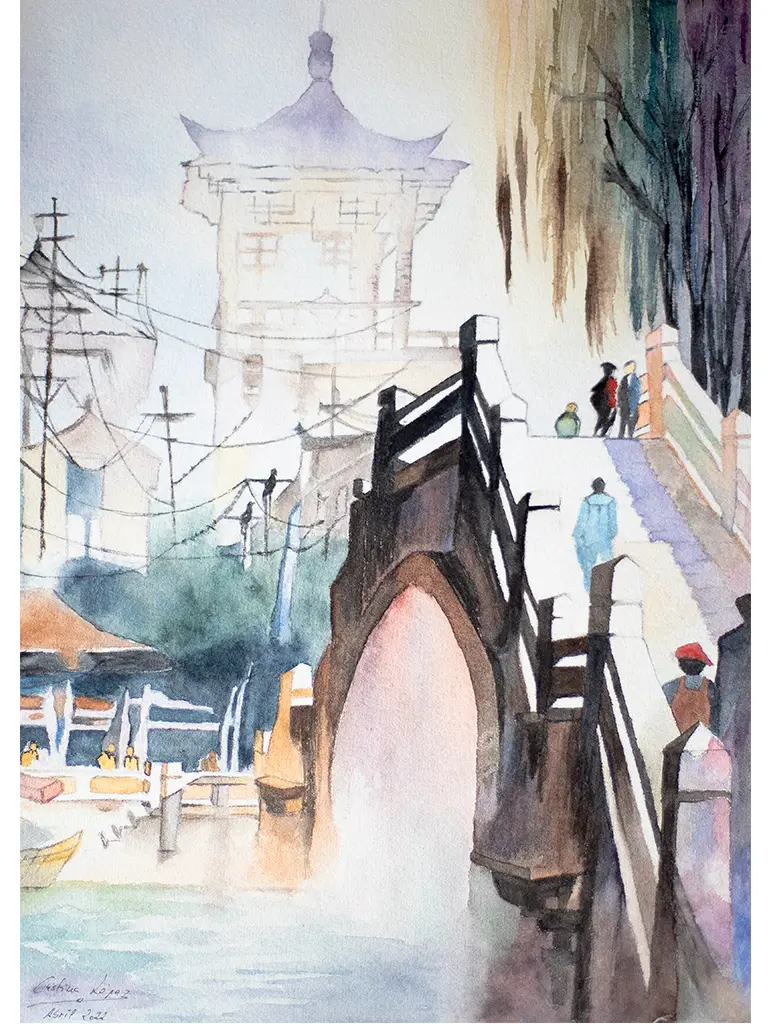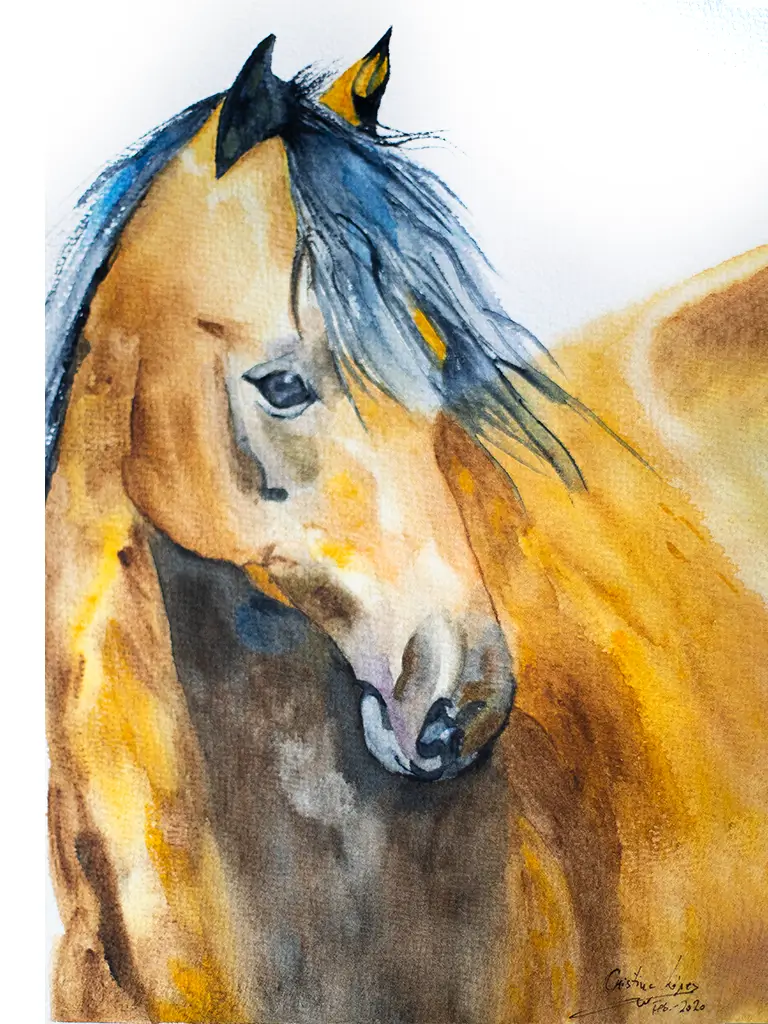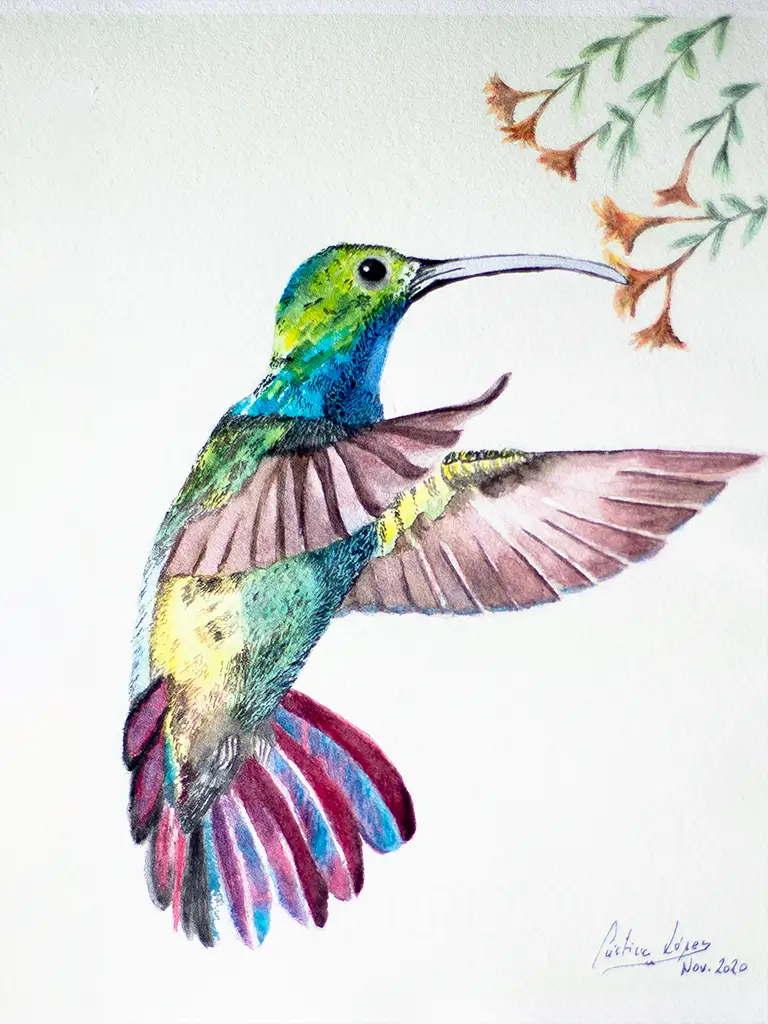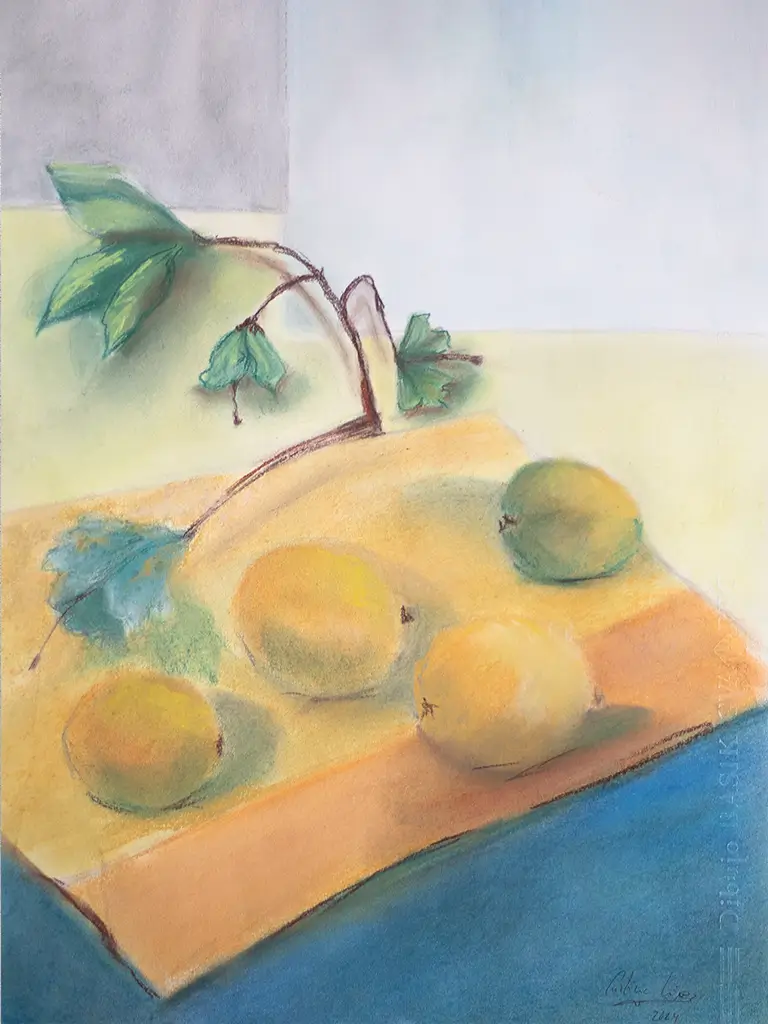Memories of Japan

This landscape, painted in colour watercolour, is inspired by the traditional aesthetics of China and Japan, where nature is not only scenery, but spirit. The scene shows a tranquil river flowing through the paper as if it were flowing in a dream. An arched bridge connects the two banks, and on it walk small figures in traditional dress: kimonos or hanfu, serene faces, slow steps. In the background, almost as if emerging from the mist, the curved roof of a temple is insinuated, silently guarding the history of the place.
The watercolour technique has been worked with softness and breath. The brushstrokes are loose but meditated, evoking oriental landscape painting (shanshui) where the important thing is not fidelity to detail, but the balance between full and empty, between what is shown and what is suggested. The water, the silent protagonist, reflects the sky with barely defined spots, while the colours – earthy, soft greens, diluted blues – accompany the calm of the whole.
This drawing is not just an image, but an invitation to meditation. Like the old painted scrolls that were unrolled little by little, this landscape proposes a slow journey, where each element has its place, its weight, its pause.
It is a tribute to the ephemeral, to harmony, and to the beauty that dwells in the simple.
The eye of the horse

This portrait focuses on the head of a horse, captured in watercolour with a gaze that balances strength with stillness. The choice of watercolour is not accidental: its fluidity allows us to pay homage to the nobility of the animal without enclosing it in rigid lines. The water carries the pigment as the wind caresses the mane – freely, with rhythm, with respect.
Each stroke seeks to suggest rather than define. The soft shadows on the muzzle, the sparkle in the eye, the tufts of hair that blend into the background… everything is worked from transparency, allowing the white of the paper to breathe and give life. It is not a strictly realistic representation, but a presence: that instant when the horse turns its head slightly, hears something in the distance, and everything stops.
This drawing is an invitation to see beyond the form: to connect with the quiet dignity of the animal, with its ancestral memory, its contained power. Because in the silence of its gaze there is something that reminds us of who we were when we still lived close to the land and the animals.
Hummingbird on flower

This small drawing captures a fleeting moment: a hummingbird stopped in mid-flight, its beak immersed in a flower. The work is executed in watercolour, ink and coloured marker, a combination that combines the ethereal with the precise. The watercolour brings transparency and movement, evoking the lightness of the air and the speed of fluttering wings. The ink, on the other hand, fixes the structure and gives character to the outline, while the felt-tip pen introduces vibrant, almost electric touches to the feathers and the flower.
Despite its small size, the drawing is full of energy. The hummingbird, a symbol of the ephemeral and the sacred in many cultures, represents here that almost invisible moment that passes before our eyes without our noticing. The gesture of approaching a flower, an everyday occurrence in nature, becomes an almost ceremonial act.
Each stroke was designed so as not to break the delicacy of the moment. The lightness of the water, the speed of the colour, the decisiveness of a line: everything converges to construct not only an image, but a pause.
Because sometimes the smallest thing contains the most intense thing.
Study of pastel lemons

This pastel still life of lemons is a vibrant, tactile study of light caught in the everyday. The lemons, deep yellow almost amber in their sunniest areas, rest on a crumpled white cloth, with soft shadows melting into shades of lavender, ochre and olive green. The background is diffuse, barely suggested with warm tones and broad brushstrokes, making the fruits seem to float within an atmosphere suspended between realism and evocation.
The process was deeply physical. Working with pastels demanded direct, almost intimate contact with the paper. Each layer of colour was applied with the fingers, blurring the pigments to mimic the slightly porous texture of lemon peel. The artist experimented with overlapping colours – mixing canary yellow with soft greens and oranges – to suggest the hues that light cast on the rough surface. The composition developed organically, without sketching, allowing the objects to ‘appear’ as the hand felt them.
The inspiration behind the work was the desire to celebrate the commonplace. Not as something vulgar, but as something profoundly beautiful in its honesty. The lemons, bought from a street stall one spring afternoon, had small imperfections: spots, indentations, scars. Instead of hiding them, the artist exalted them. For there – in what is neither symmetrical nor polished – lies what is truly human. The use of pastel was not accidental: its chromatic richness and malleability were ideal for capturing not only the colour, but also the soul of these lemons, which seem to glow from within, as if they contained light.